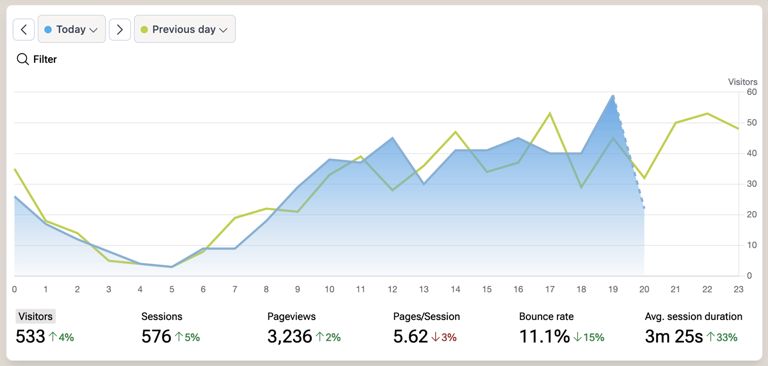In our previous dive into the world of web analytics, we tackled the essentials: visitors, sessions, and pageviews. Now, let's venture deeper and decode other critical metrics like pages per session and bounce rate, unraveling what they truly mean for your site.

Pages per Session: More Than Just a Number
Think of every visit to your site as a story. It starts with a session and, naturally, one page view. But what happens next? Does the visitor wander through the labyrinth of your content, clicking links and exploring menus? Here's where Pages per Session comes into play. This metric is the average number of pages viewed during a session.
A high Pages per Session count often signals that your site is a digital treasure trove, keeping visitors engaged and thirsty for more. But remember, this metric isn't just black and white. Factors like your site's UX design play a significant role in shaping these numbers.
Bounce Rate: The Misunderstood Metric
Now, let's talk about the infamous bounce rate - the percentage of single-page sessions. Picture this: a visitor from Facebook lands on your article, scans it, and poof, they're back to scrolling their feed. That's a classic bounce. A high bounce rate is often seen as a red flag, suggesting visitors aren't sticking around. But context is key.
What if a visitor finds precisely what they need on that one page and leaves satisfied? They're still marked as a 'bounce'. So, while e-commerce and content-heavy sites might crave a low bounce rate, it's not always a straightforward indicator of success.
Average Session Duration: Time Well Spent?
The clock starts ticking the moment a visitor opens a page. When they exit, we get the session duration. Looking at this across the board, we arrive at the average session duration. Generally, the longer, the better – think Twitter, Facebook, where time flies.
But consider the Google conundrum: You search, click, and you're out. Short and sweet, yet Google remains indispensable. So, this metric, too, has layers and depends heavily on the nature of your site.
Conclusion
In the fast-evolving realm of web analytics, numbers tell stories, and context is the king. It's not just about having data; it's about understanding the narrative behind it. Stay tuned as we continue to unravel the mysteries of web metrics, helping you make the most informed decisions for your digital presence.
